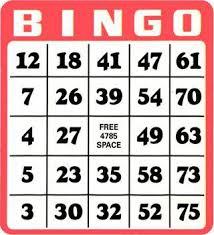Is sales and “art” or a “science”? It depends….is your marketing strong, or does it suck?
In my last post: Is Sales an Art or a Science I shared how I opened a recent presentation to business owners and their senior leadership teams with a question;
Is Sales an Art or a Science?
The responses were pretty predictable;
Felt sales was a science: 30%
Felt sales was an Art: 60%
Felt sales was both an art and a science: 10%
This was interesting, however I heard the soft comment I was waiting for: “It Depends…on your industry, team’s training, product, price, availability of sales tools, your web site….” (Perfect! Now we are going to have a discussion!)
Then they asked me…what did I think? Art or science? I said “yes” as sales is often both. I find where sales falls in the spectrum with art on one end and science on the other depends on the organizations competency in marketing.
Marketing? Yes, because the fundamental job of marketing is to have an intimate understanding of your market, its buyer’s problems, and how they set out to solve those problems. Competent marketing teams clearly understand the buying process, cycle and criteria. They create tools to help buyers buy.
Market Leaders
If you have a strong competency in marketing, you know your market, and its problems that need to be solved. You know the buyers; you have clearly stated buyer persona’s and you understand the buying process. Your message is clear and does not require a translator (salesperson) to help buyers understand the problems your products or services solve.
Market leaders have such a clear understanding of the buying process their sales is more of a science. The art in the sale for market leaders is the salesperson’s ability to ask open-ended questions and apply proven sales tools for the right step of the buying process that keeps the conversation moving to a sale.
In market leading organizations, sales are 80% science and 20% art.
Unfortunately less than 10% of organizations would be considered Market leaders. Those that are, dominate their markets.
Market losers
If your team lacks a competency in marketing you will experience it for yourself on sales calls. Your team plays; “ feature and benefit BINGO” in hopes they rattle off all your features and benefits and at some point your buyer yells “BINGO” as they put the pieces together with the problem they have, and they understand how they “think” you solve this problem.
Market losers really do not know the problems their products solve for their buyers, the buying process, or buying criteria. In most cases their products were built from the inside out and marketing was tasked with “creating the need” for their products…losers!
Market losers launch products and believe they can “manage by objectives” and meet their goals by managing key performance indicators created without any knowledge of their market.
Market losers have high turnover as they replace those who fail to hit goal, and skilled team members leave to join market driven teams.
Market losers have websites that talk about their company, years in business, and they prepare the feature and benefit BINGO card for their buyers and salespeople.
For market losers 80% of sales is an “art”.
The CEO and CFO of market losing companies go crazy because there is a lack of predictability, and they can not “manage” their way to market leadership. In this model your salespeople need to disregard what marketing does provide, and listen to their buyers, understand buyer problems, and create their own sales tools that discuss how their product or service solves those problems.
The danger in this model is sales may be promising things your product does not do, and the message varies by salesperson and thus is not repeatable.
From my experience, I would say about 50% of the companies out there are Market losers.
They build products because they can and not because they should. They are sales driven or bottom line driven. They have high turnover and ironically the salespeople they are letting go today won awards for sales performance two years ago….so what changed?
From my experience 40% of companies are somewhere in between but striving to improve.
They often launch a product that becomes very successful and then have a series of launches that fail. As they grow, the leaders who knew the market are now “managing the business” and lose touch with the market and its problems. They forget it was their understanding of market problems that caused their success and often fall into the trap that they think it was their personal brilliance and or hut spa.
As I closed the discussion I asked everyone in the room to do two things in the next seven days….
-
Go out and meet with your customers and ask questions about their business and the problems they are facing, and how they try to solve those problems
.
-
Look in your top salesperson’s trunk of their car and or lap top and see the tools they are using
The good news is everyone can become a market leading organization and realize higher than market average profits, lower turnover and increased shareholder equity. When you clearly understand your market and buyers, and create sales tools to help buyers move through their buying process, you create a win-win-win.
So what kind of organization do you work for? Market leader? Market Loser? Or someplace in between? Why?














